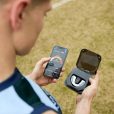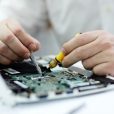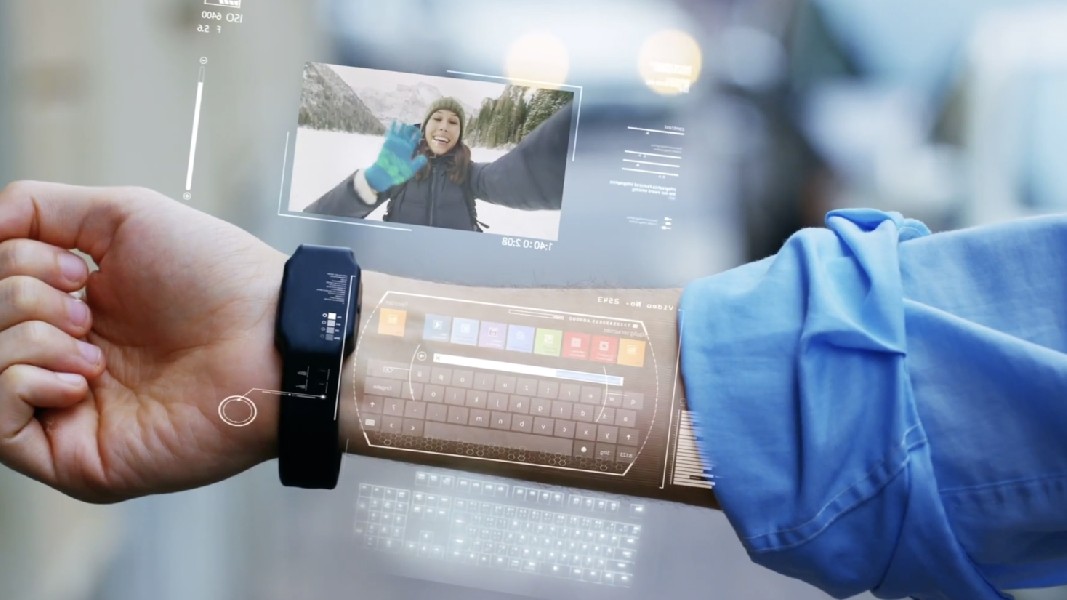A new bid for sustainable tech is here. So you’ve heard of watches powered by batteries, hand winding and solar energy. Now, make way for watches, among other electronic wearable devices, to be powered by the moisture in the air (unsure whether spit or warm breaths count).
Research services company Australian Advanced Materials (AAM) and The University of New South Wales (UNSW) have come together to develop a next-generation power source that can directly generate electricity from moisture in the air for wearable electronics. The project—entitled ‘Powering Next Generation Wearable Electronics’—is valued at $1.6 million and is backed by the pooled development fund Strategic Elements (ASX: SOR).
Part of the funding comes from the Australian Research Council (ARC) Linkage Grant, which is a federal program supporting strategic alliances with thoroughly vetted and approved applications. The funding includes $486,640 in cash from the ARC and $554,178 in services and equipment in kind from The University of New South Wales over three years. AAM will provide $350,000 in kind and $220,000 in cash.
Through this project, the Company aims to achieve an electronic material for use in wearable electronics, advances in self-powered, environmentally-friendly devices, and the commercialisation of Australian-invented technology. AAM will retain the IP of the resulting technology, dubbed Energy InkTM.
Led by Professor Dewei Chu—who is also one of the brains behind AAM’s Memory Ink tech—a team of researchers will access state-of-the-art facilities at UNSW, including nanoionics (the study and application of fast ion, i.e. molecule, transport) materials fabrication, electronic printing and characterisation technology (assessing potential threats).
The technology is still in early development, and the fundamental upper limit of aspects, like how much power it will be able to produce, for how long and how intensely, remains unknown. Printed graphene-oxide-based cells—used extensively in biosensor research—that generate energy from airborne water molecules could, potentially, directly power a device, complement a battery by extending device life or provide energy for battery storage.
To test these claims out, Strategic Element-owned Stealth Technologies, an automation and robotics company, is currently building programmable load simulators that will enable automated testing. Through automation, the Company will be able to run multiple tests at the same time without human intervention. This will accelerate testing and inform AAM of the size of cells or packs required to power the circuits used in various real-world products.
The initial demo of this tech will simulate how Energy Ink cells perform in a commercial wearable skin patch. It’s on track to be completed in Q4 2022. Electronic Skin Patches are currently a $14.81 billion market, forecasted to grow to about $40 billion by 2033. These provide sports, health and other information from devices attached to the skin and currently use rigid alkaline batteries or those with lithium materials.
If all goes to plan, AAM and UNSW will be able to explore larger-scale Energy Ink systems. In fact, such an undertaking has already proven successful. Over a 14-day testing period, a pack previously successfully generated more than 2.4 Ah (2400 mAh) of charge. Researchers found that as Energy Ink cells increase in size, their electricity generation capabilities do, too. A single 100 cm2 cell can generate over 1.4 Ah (1400 mAh) of electrical charge.
Alternative power sources and renewable energy tech have been at the heart of many tech conversations over the past years. Moreover, there has been an increased interest in hydrogen-based sustainable energy solutions, especially with the US’s IRA (Individual Retirement’s Arrangements) enacting a law promising a US$3 per kilogram tax credit for eligible “clean” hydrogen users.
While AAM’s project sounds interesting, it is still an idea waiting to be realised and, more importantly, commercialised. As Strategic Element isn’t the only one aiming to make the most of hydrogen-based energy tech, it will need to prep itself for some intense competition.
- Ovanti’s iSentric signs contracts worth $14.4m with Malaysian commercial bank - June 27, 2024
- Baby Bunting fights back from retail downturn with 5-year strategy, includes Gen-Z focus and self-funded growth - June 27, 2024
- CLEO meets with US FDA to develop strategy for ovarian cancer test launch - June 26, 2024













Leave a Comment
You must be logged in to post a comment.